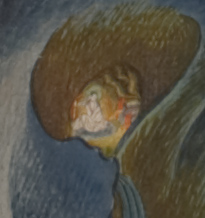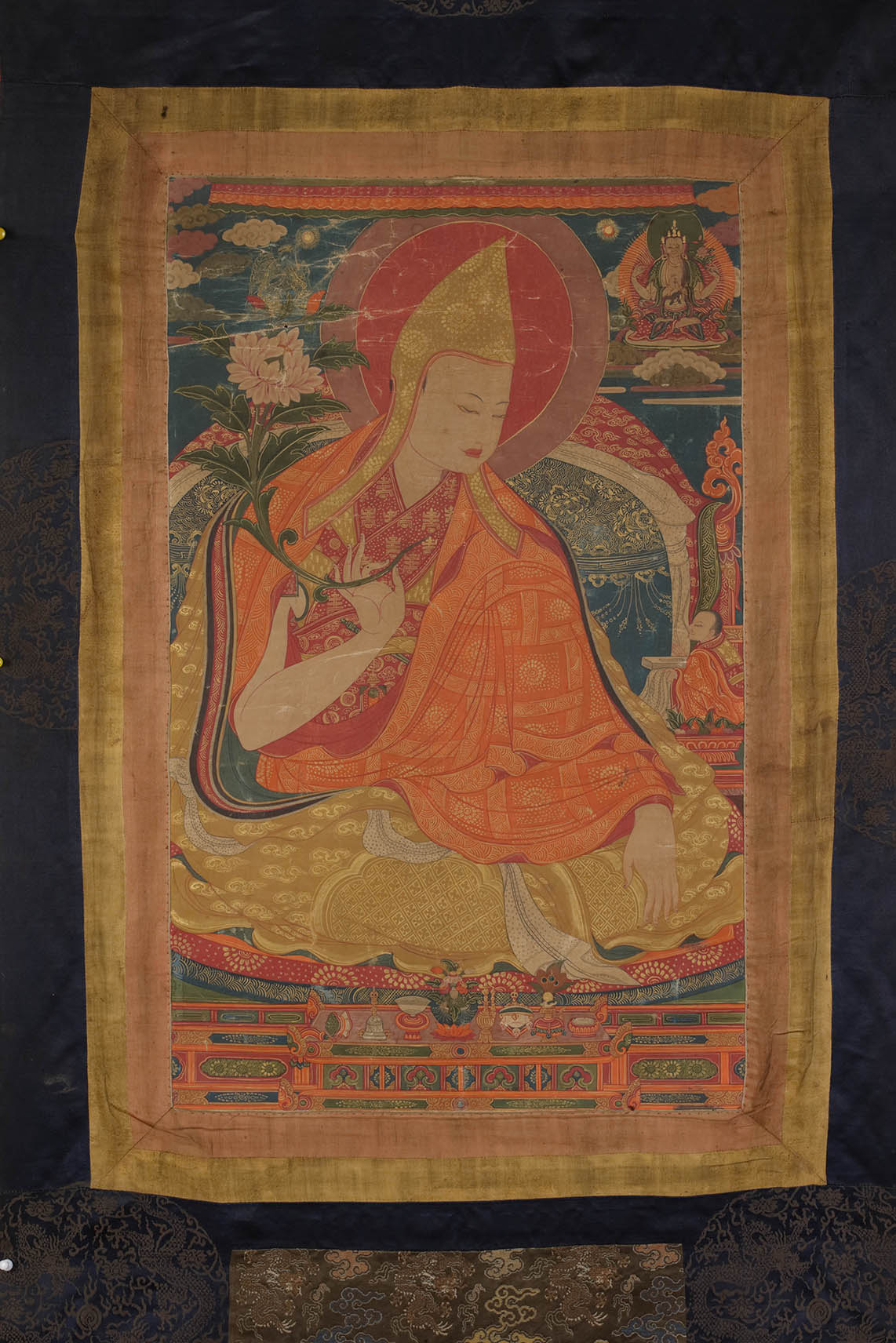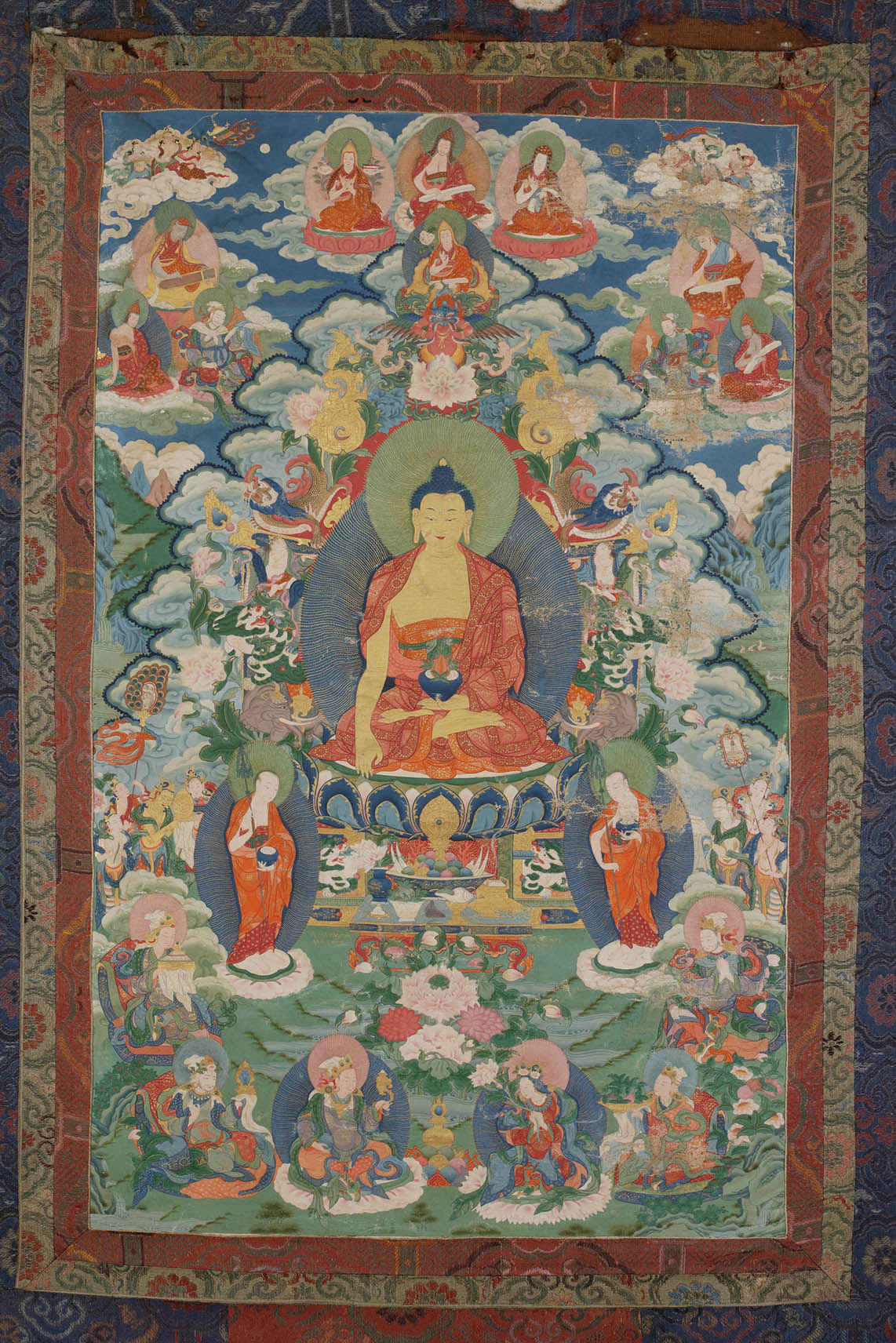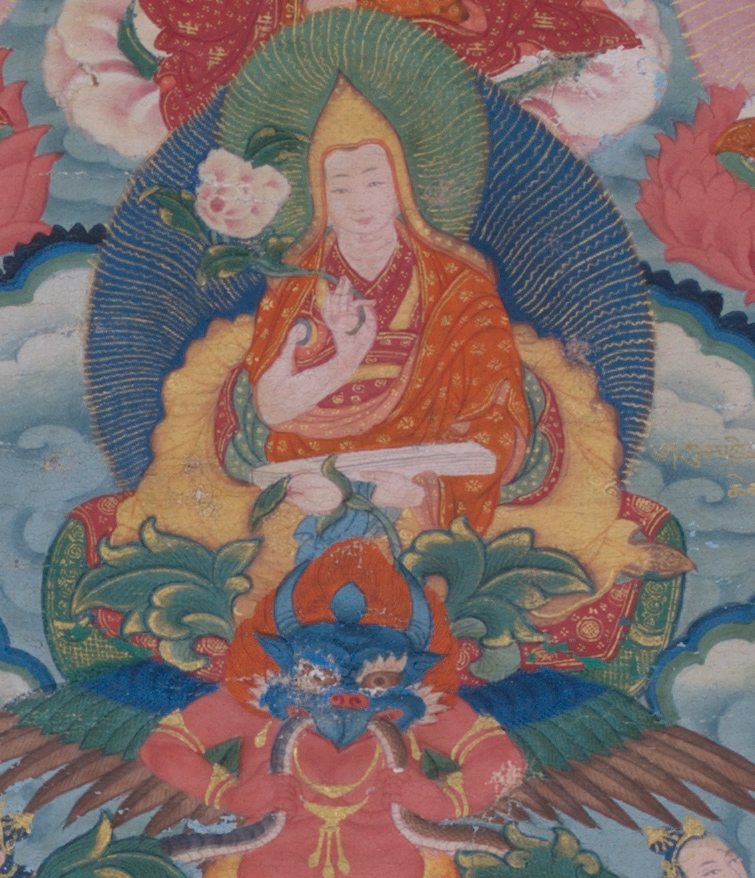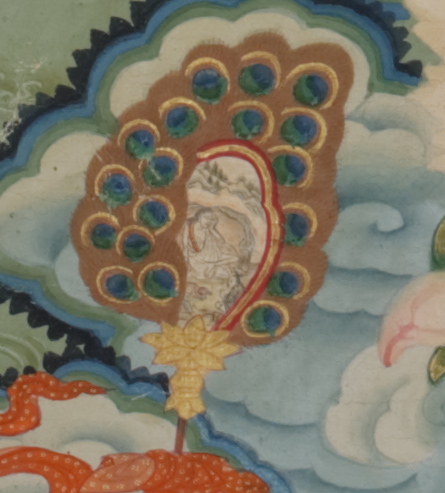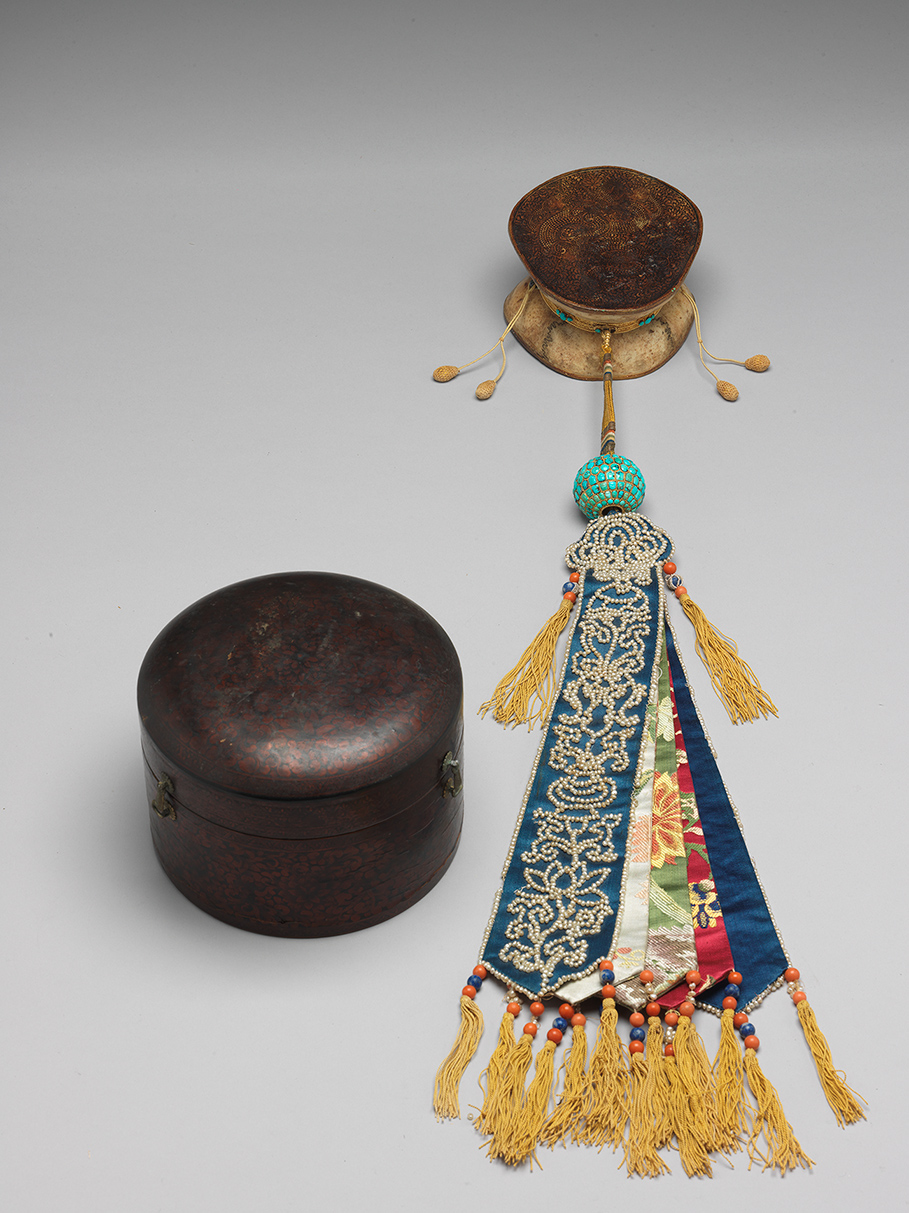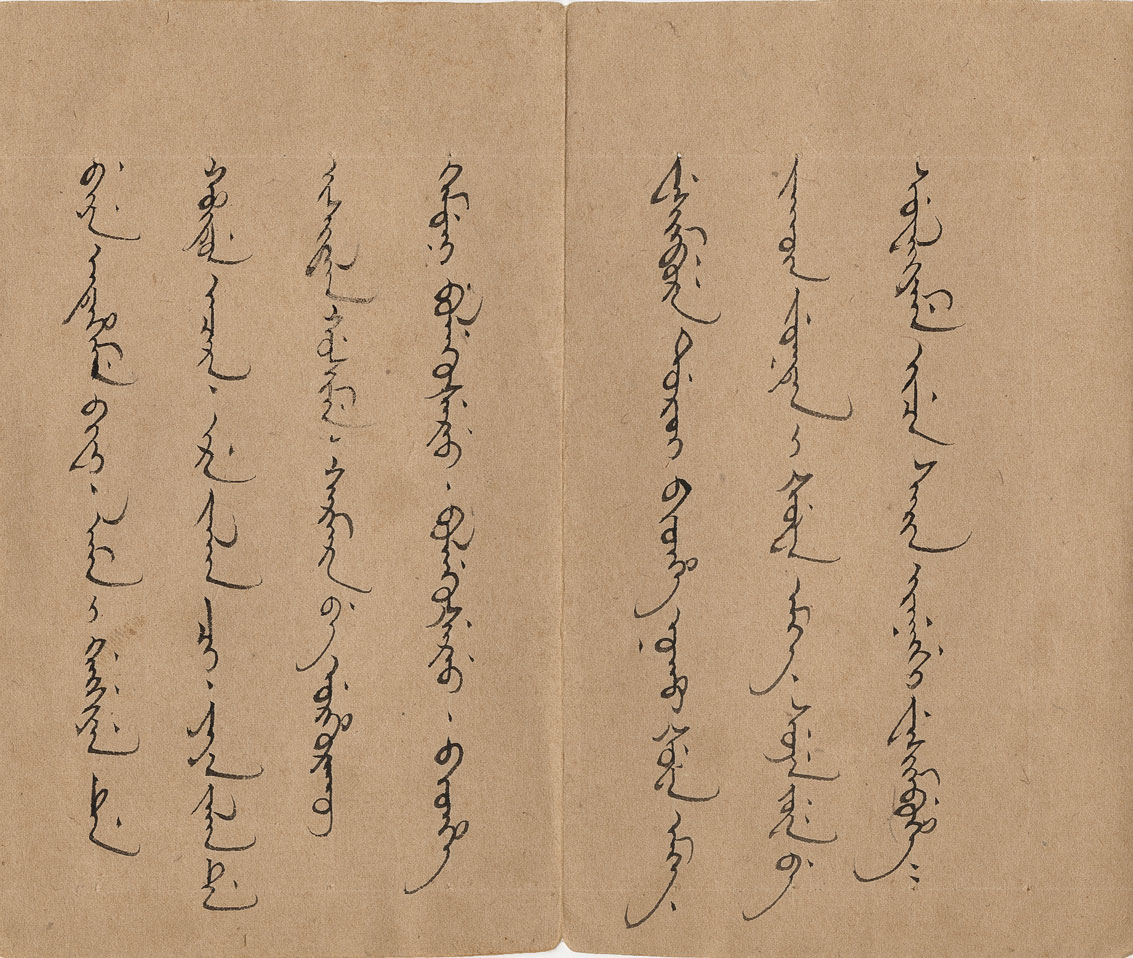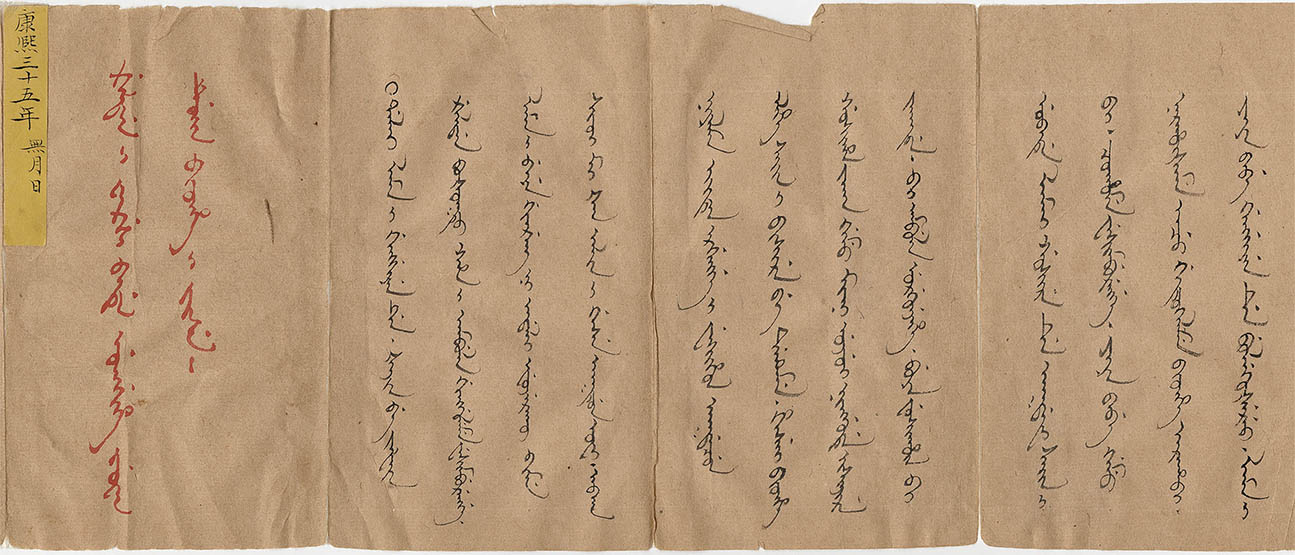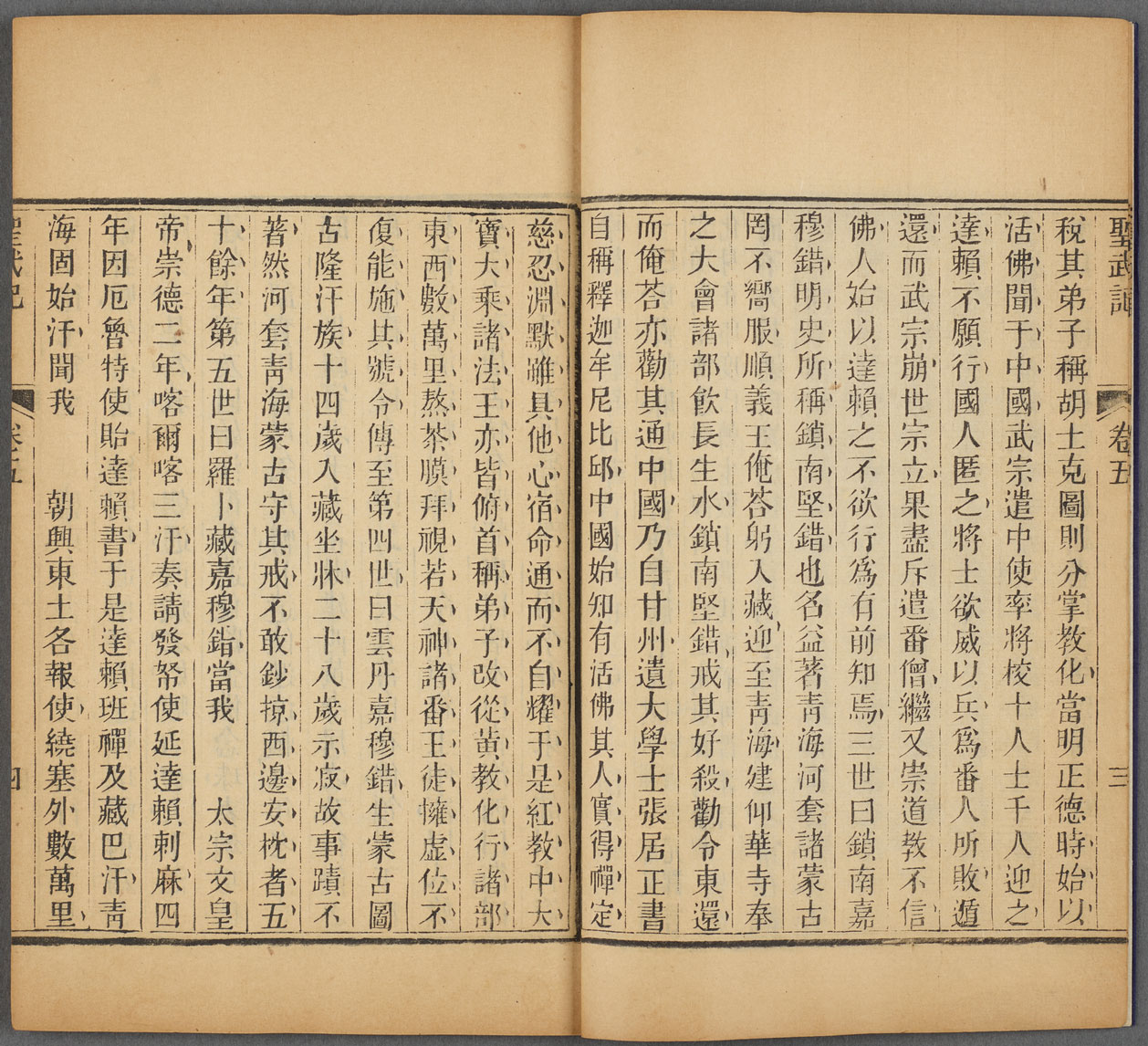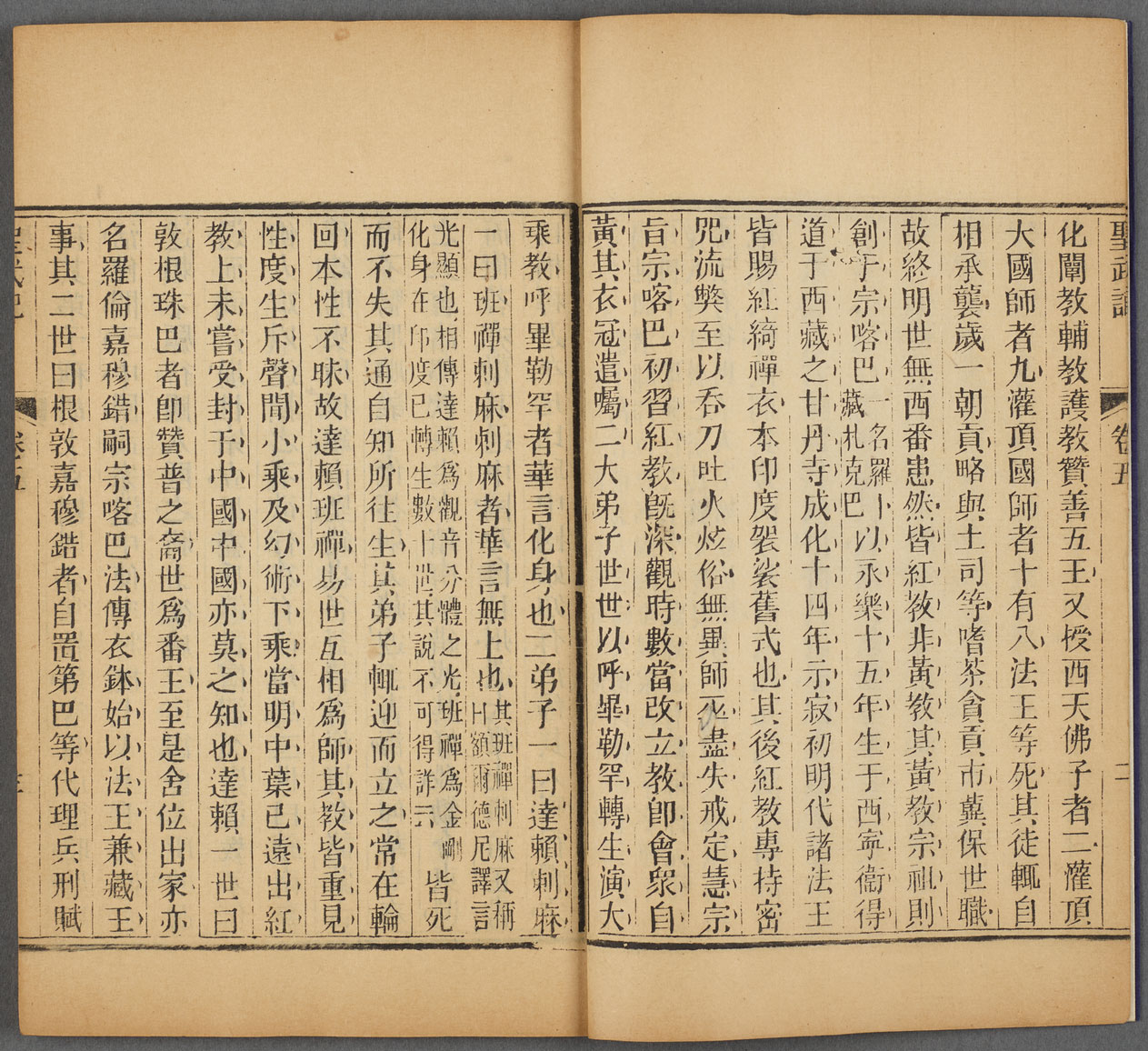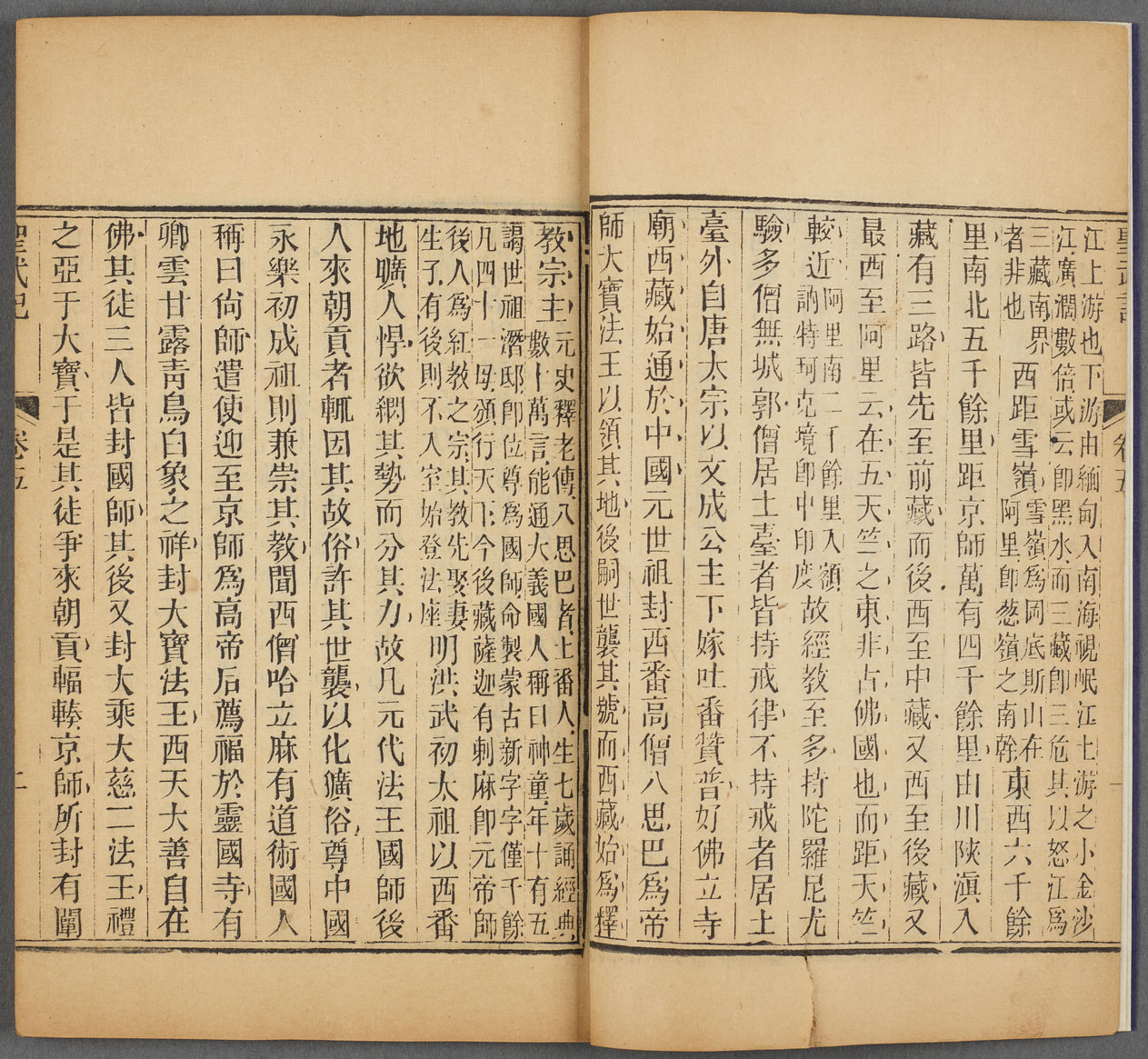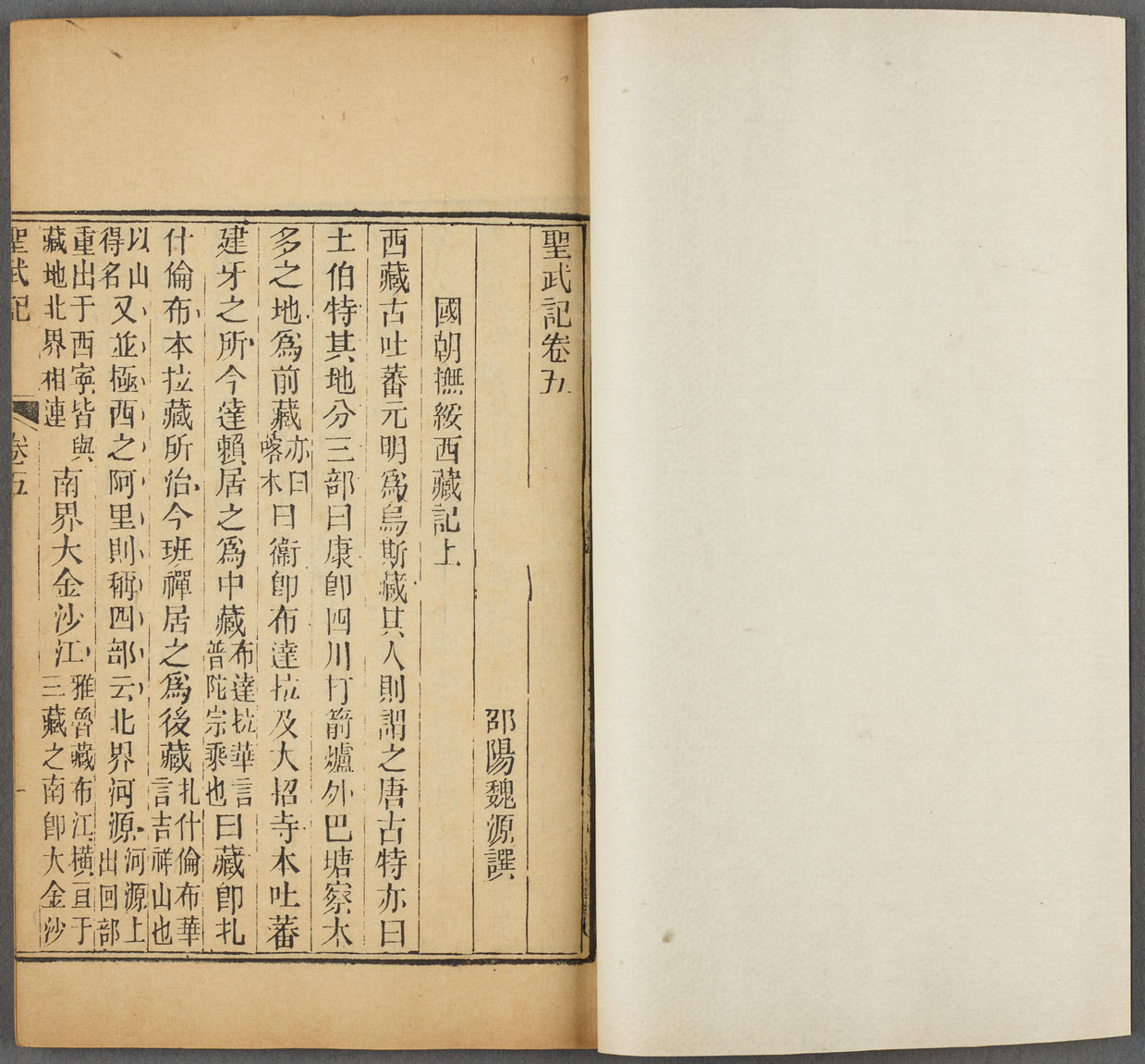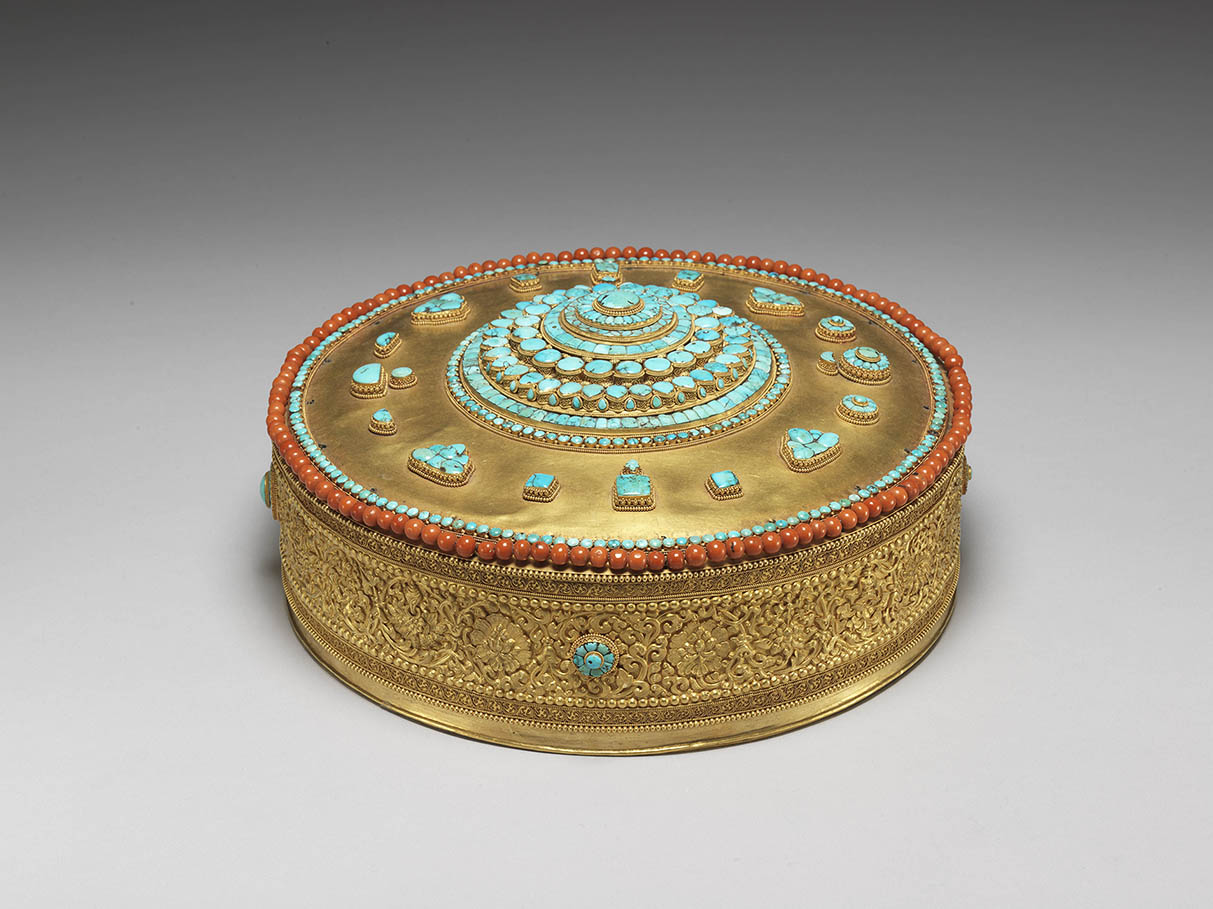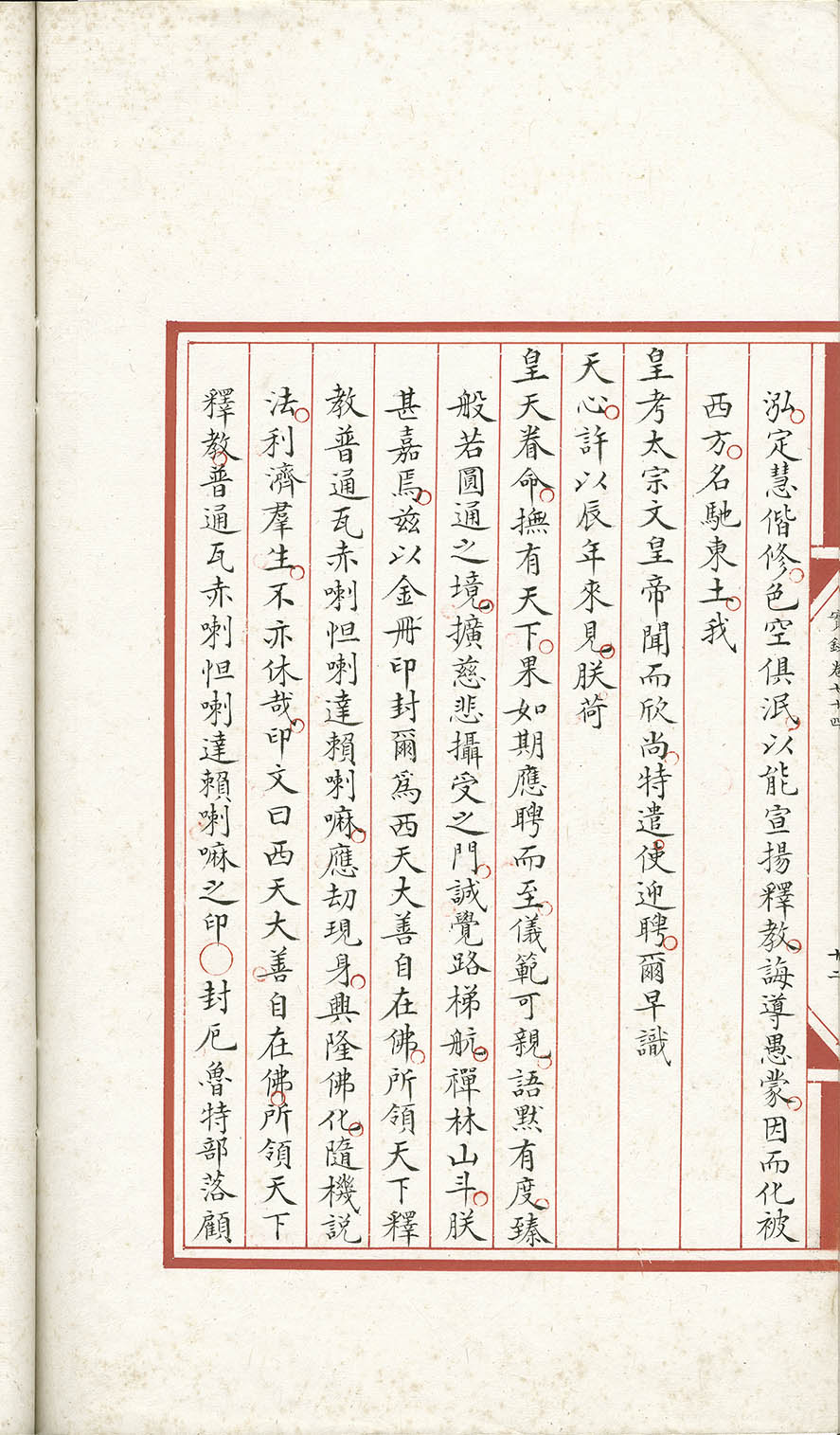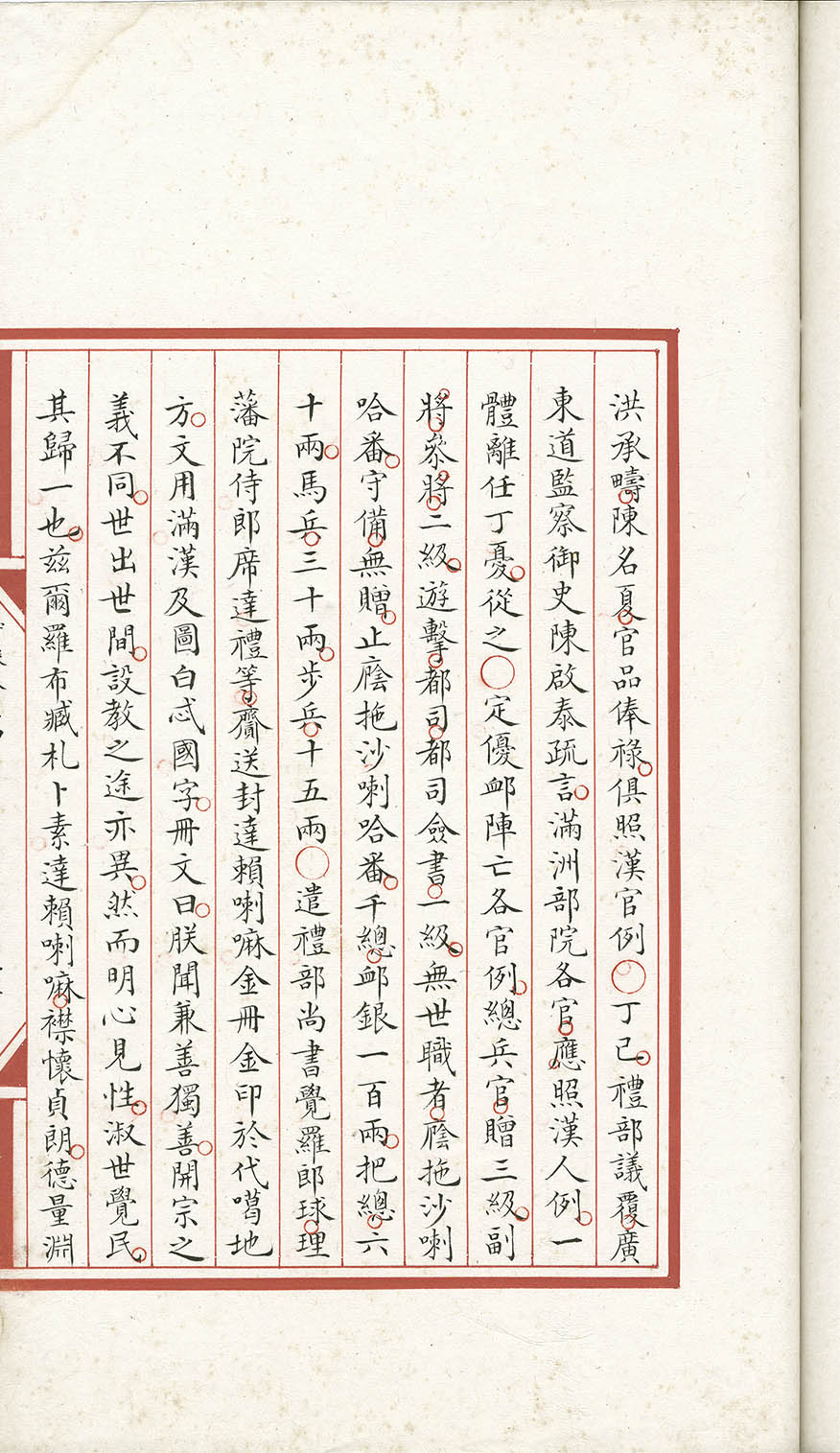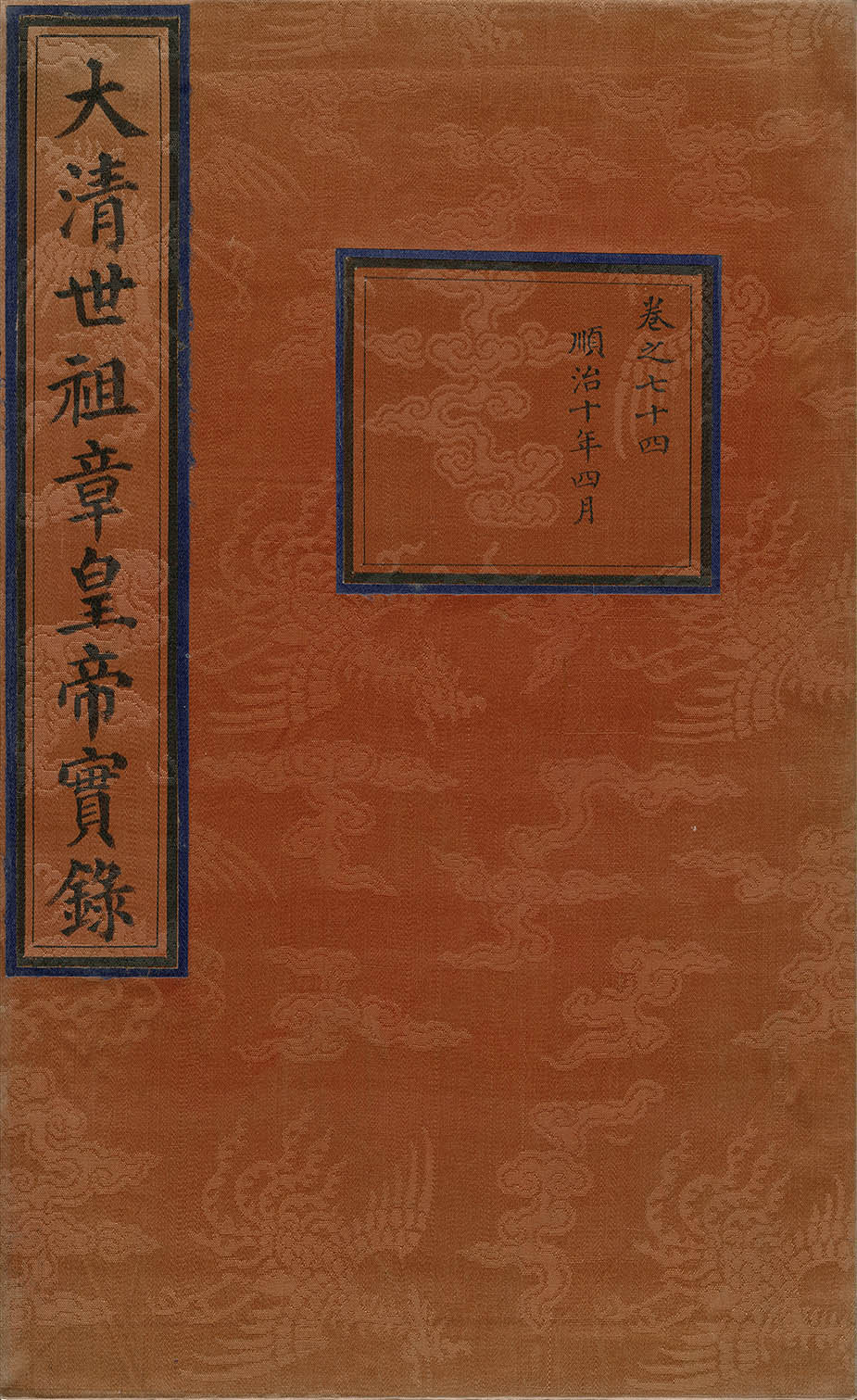The Dalai Lama and the Panchen Erdeni of Tibet
Two disciples of Tsongkhapa, Gedun Drupa (1391-1474) and Kedrup Je (1385–1438), were posthumously identified as the First Dalai Lama and the First Panchen Erdeni, respectively, which became the two foremost living Buddha lineages in the Gelug School. The title Dalai, the Mongolian word for "ocean," was bestowed upon the Third Dalai Lama (1543-1588) by the Mongolian ruler Altan Khan (1507-1582) of the Tumed. The Qing dynasty saw nine Dalai Lamas, from the Fifth to the Thirteenth. Panchen, on the other hand, is short for Pandita Chenpo, meaning "Great Pandita." The word Pandita is derived from the Sanskrit Paṇḍita, which means "Master of the Five Wisdoms."
The lineage of the Panchen Erdeni began with the Fourth Panchen Losang Chö kyi Gyaltsen (1570-1659), who received the title from Güshi Khan (1582-1654), leader of the Khoshut Mongols. The three immediate predecessors of Losang Chö kyi Gyaltsen were posthumously recognized as the First, Second, and Third Panchen Erdeni. The Qing dynasty saw six Panchens, from the Fourth to the Ninth. This section offers an iconographic introduction to the important reincarnated teachers of the Dalai and the Panchen lineages, and displays important artifacts connected with the visits to Beijing made by the Fifth Dalai Lama and the Sixth Panchen Lama to meet with Qing emperors. It also shows how the Qing court employed the "Golden Urn" system to select khubilghans and to what extent the practice impacted the living Buddha lineages of Tibetan Buddhism.
The Meeting of the Fifth Dalai Lama and the Shunzhi Emperor
The Dalai Lama was the earliest living Buddha lineage of the Gelug School, while the Fifth Dalai (1617-1682) was the first Gelug khubilghan to have a title conferred on him by the Qing court. With the investiture there began a long-term relationship between the School and the Manchu empire.
Portrait of the Fifth Dalai Lama
- Produced in Tibet, 17th century
- Collection of Mme. Hsiyin Ho
The Yellow Hat lama in the thangka has a vajra in front of his chest, indicating that this figure is the Fifth Dalai Lama (1617-1682). Although the leader of the Gelug School, the Fifth Dalai Lama also supported the Nyingma School and was known for his ties to the Nyingma lineage. Nyingma literally means "ancient," and the vajra is the ritual implement specific to the Nyingma School. It is worth pointing out that a "transparent" Fourth Panchen (1567-1662) outlined in gold can be seen on the blooming lotus held in the Fifth Dalai Lama's right hand. The Fifth Dalai Lama was identified by the Fourth Panchen, who was his most important mentor and played a key role in his rise to power.
Portrait of Śākyamuni
- Produced in Luhuo, Sichuan, late 18th century
- Collection of Mme. Hsiyin Ho
In the center of this portrait is the typical motif of Śākyamuni and his two disciples. The trio towards the top are Aśvaghoṣa, 'Phags pa (1235-1280) of the Sakya School, and Tsongkhapa (1357-1419). The Yellow Hat guru underneath carrying the inscription "The All-knowing Fifth" is the Fifth Dalai Lama. Hidden in the peacock feather fan held by the deva on the left is Jêbzün Milaräba (1052-1135), an important figure of the Kagyu School. The rendering of hidden imagery is characteristic of the Sichuan master Nam mkha' rgyan (active 17th century) from Luhuo County.
Ghanta and vajra with leather case
- Qing dynasty (1644-1912)
The ghanta and vajra were among the tributes presented to the Qing court in the 18th century. The two objects were placed in a leather case on the inside of which texts in Chinese, Manchu, Mongolian, and Tibetan were inscribed, indicating that the they had been used by the Second (1475-1542), Third (1543-1588), and Fifth (1617-1682) Dalai Lamas.
The Chinese translation of the last sentence is incorrect and should read, "This is a re-creation of the karma gan dril." The karma gan dril is the bell given by the Ming emperor to Gyalwa Karmapa, a type of bell that made its way into Tibet. What make it special are the eight Sanskrit seed syllables (bījākṣara) that can be seen on the lotus petals that decorate the bell. The term "re-creation" refers to the changing of Sanskrit syllables into Tibetan characters.
Ḍāmaru Skull hand-drum with case
- Made in Tibet, Qing dynasty (1644-1912)
This ḍāmaru hand-drum is stored in a leather case, the inside of which is lined with white stain and carries an inscription in Chinese, Manchu, Mongolian, and Tibetan scripts. According to the inscription, the hand-drum was originally housed in the Potala Palace and was used by the Second, Third, and Fifth Dalai Lamas. The hand-drum was modelled after an Indian drum brought to Tibet by Gyalwa Karmapa during the Ming dynasty. The ḍāmaru hand-drum is made from male and female skull bones, with the joint reinforced with a metal hoop. The leather drumhead is painted with dragons and flowers. Attached to the metal hoop are two yellow oval cotton woven mallets, and hanging from the mallets are five-colored ribbons decorated with red coral, pearls, lazurite, and yellow tresses.
Correspondence submitted by Galdan to the Fifth Dalai Lama
- Galdan Boshugtu Khan (1644-1697)
- 35th year of the Kangxi reign (1696), Qing dynasty
Galdan Boshugtu Khan (1644-1697) was the fourth son of Dzungar leader Erdeni Batur (?-1654). He was recognized in childhood as the reincarnation of the Fourth Ensa Khutuktu and sent to Tibet to be educated under the Fifth Dalai and the Fourth Panchen (1570-1662).
In the 9th year of the Kangxi reign (1670), Galdan returned home to lead the Dzungar Khanate. He defeated the Khalkha in an expedition and also clashed with the Qing court. In response, the Kangxi emperor (r. 1661-1722) personally led troops to expel the Dzungars, and in the 3rd intercalary month of the 36th year of the Kangxi reign (1697), the defeated Galdan committed suicide. This item contains 14 letters sent by Galdan to dignitaries in Tibet in the 35th year of the Kangxi reign (1696), of which the first one is a letter of praise and laudatory remarks addressed to the Fifth Dalai Lama.
The Pacification of Tibet, Part I
- From fascicle 5 of Shengwu Ji (The Sacred Wars)
- Wei Yuan (1794-1857), Qing dynasty
- Third revised edition by the Guweitang Studio of the Weis of Shaoyang, 26th year of the Daoguang reign (1846), Qing dynasty
The Shengwu Ji was completed in the 22nd year of the Daoguang reign (1842). The first ten fascicles trace the military history from the founding of the Qing dynasty to the Daoguang period (1820-1850). The 5th fascicle, "The Pacification of Tibet, Part I," details the Galdan expedition and the Dzungar campaign, and documents how Sangye Gyatso (1653-1705), regent of the Fifth Dalai Lama and ally of Galdan Khan, kept secret the death of the Fifth Dalai Lama in the 21st year of the Kangxi reign (1682), and for 15 years claimed that the religious leader was in retreat.
The Kangxi emperor learned of the Fifth Dalai Lama's death in the 35th year of his reign (1696) from Galdan's people and was greatly irritated. Sangye Gyatso admitted the lie the next year and told the emperor that he had already selected the Sixth Dalai Lama (1683-?), asking the emperor to keep the secret until the Sixth Dalai Lama's installation on the 25th day of the 10th month. The emperor agreed.
Tibetan gold mandala with turquoise and coral inlays in a leather case
- Made in Tibet, Shunzhi reign (1644-1661), Qing dynasty
This mandala uses variously shaped pieces of turquoise to represent Mount Meru, the four island-continents, the seven rings of golden mountains, the sun, and the moon. The edge is decorated with large coral beads. A gift presented by the Fifth Dalai Lama (1617-1682) in the 9th year of the Shunzhi reign (1652), this mandala was originally worshipped in the Xihuang Monastery and was later moved by the Changkya Khutukhtu to the inner court and worshipped in the Yangxindian Hall, the emperor's living quarters. The metal craftsmanship and the quality of the turquoise and coral are of the highest level. The mandala is stored in a round leather case, and the inside of the lid lined with white satin and inscribed with texts in Chinese, Manchu, Mongolian, and Tibetan scripts. The Chinese inscription states that the mandala was a gift from the Fifth Dalai Lama and was originally worshipped in the Xihuang Monastery and later moved to the inner court by the Changkya Khutukhtu.
Emperor Shunzi Conferring a Title upon the Fifth Dalai Lama
- From fascicles 73-74 of Daqing Shizu Zhang Huangdi Shilu (Veritable Records of the Emperor Zhang, Shizu, of the Great Qing)
- Entry for the dingsi day of the 4th month of the 10th year of the Shunzhi reign (May 18, 1653), Qing dynasty
- Small red silk-bound edition
In the 15 year of the Chongzhen reign (1642) in the Ming dynasty, the Fifth Dalai Lama (1617-1683) allied with Güshi Khan (1582-1655), leader of the Khoshut Mongols, and ended the division in Tibet by establishing the Gaden Phodrang, thus securing the political supremacy of the Gelug School. In the 7th year of the Shunzhi reign (1650) in the Qing dynasty, the emperor (r. 1643-1661) extended an invitation to the Fifth Dalai Lama to visit Beijing. Two years later, the Dalai Lama arrived in the Qing capital and resided in the Xihuang Monastery that the emperor had built for him.
In the 4th month of the 10th year of the Shunzhi reign (1654), the emperor conferred upon the Fifth Dalai Lama a gold seal, a gold album, and the title "Dalai Lama, Overseer of the Buddhist Faith on Earth under the Great Benevolent Self-subsisting Buddha of the Western Paradise." Thenceforth, all Tibetan Buddhist high monks must be confirmed by investiture by the Qing court.
